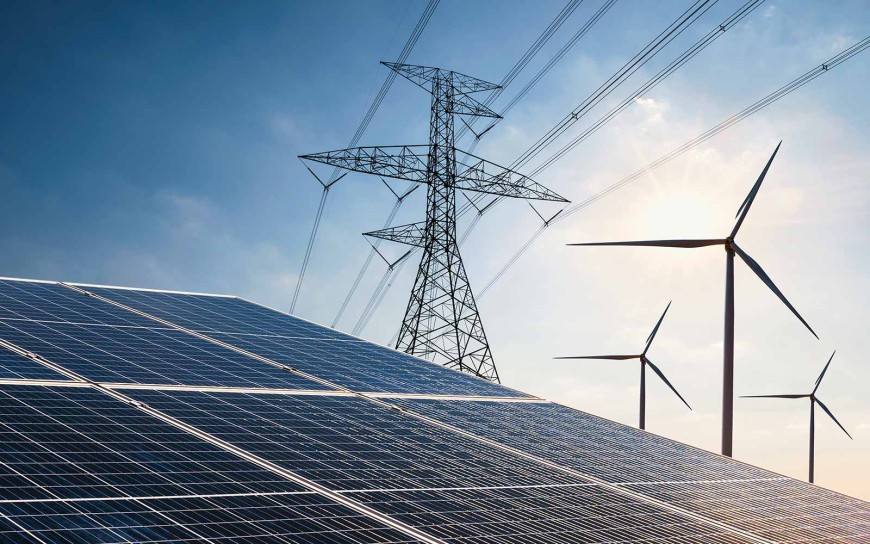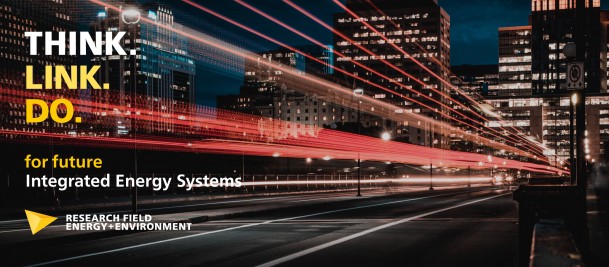New impulses for grid stability
E+E Insight Paper on the role of renewable energies in the electricity system
2025/06/04 by SWa
With the increasing share of renewable energies, it is not just the way electricity is produced that has changed – the behaviour and demands placed on our electricity grid are also undergoing profound changes. In their E+E Insight Paper “System Stability in Transition,” professors Gerd Griepentrog, Jutta Hanson, and Michèle Knodt from TU Darmstadt's IES profile topic examined how central grid functions are evolving and identified the necessary technical, regulatory, and political responses.

On 28 April 2025, a large-scale blackout occurred on the Iberian Peninsula. The causes are still being investigated, but the event clearly shows that stability needs to be rethought in an electricity system that increasingly relies on volatile, renewable sources. This is precisely where the E+E Insight Paper comes in. The information does not raise red flags, but instead offers well-supported insights into the physical and technical connections within modern grids, and uses these findings to suggest proposals for regulatory and political action.
Traditionally, grid stability relies on the physical inertia of large, rotating generators in conventional power plants. This inertia (known as instantaneous reserve) buffers short-term frequency fluctuations. With the decline of these power plants, this reserve is rapidly disappearing. Renewable energies, on the other hand, feed electricity into the grid via power electronic inverters, which by their very nature have no inertia. Without targeted technical measures, this can make the power grid more susceptible to fluctuations, voltage drops, and frequency instability.
The Insight Paper shows that suitable technologies are fundamentally available: grid-forming converters, short-term storage systems (e.g. supercapacitors) and advanced control strategies can perform important tasks that were previously reserved for conventional power plants. However, these technologies are not widely used yet. Regulatory incentives or market mechanisms to reward their contribution to the system are often still lacking.
This is where the Insight Paper comes in, formulating specific recommendations on how policy and practice can work together:
- Ensuring stability: Grid functions such as frequency maintenance, voltage regulation and oscillation damping must be transferred in a targeted manner.
- Enabling technologies: Power electronics-coupled renewable energy systems can contribute to stability – provided they are technically and regulatorily prepared for this.
- Rethinking instantaneous reserve: Storage systems and inverters must be systematically integrated into instantaneous reserve strategies.
- Rewarding grid serviceability: Market mechanisms must be adapted to make stabilising operating modes economically attractive.
- Promoting grid-forming converters: As a key technology of the future, they must be systematically commissioned and further developed.
- Accelerate practical implementation: The introduction of market-based instantaneous reserve by the Federal Network Agency is an important step – now political support is needed.
- Strengthen systems thinking: Grid stability is not a single technical issue, but an integral part of the energy transition.
The E+E Insight Paper is addressed equally to decision-makers in politics, business and administration, as well as to experts from research and network operations. It provides well-founded analyses of system dynamics under conditions of growing power electronics feed-in and identifies specific areas for action to advance the energy transition in a system-strengthening manner.
Publication
G. Griepentrog, J. Hanson, M. Knodt (2025). System stability in transition: Requirements for a reliable energy system! Zenodo. https://zenodo.org/records/15583350




